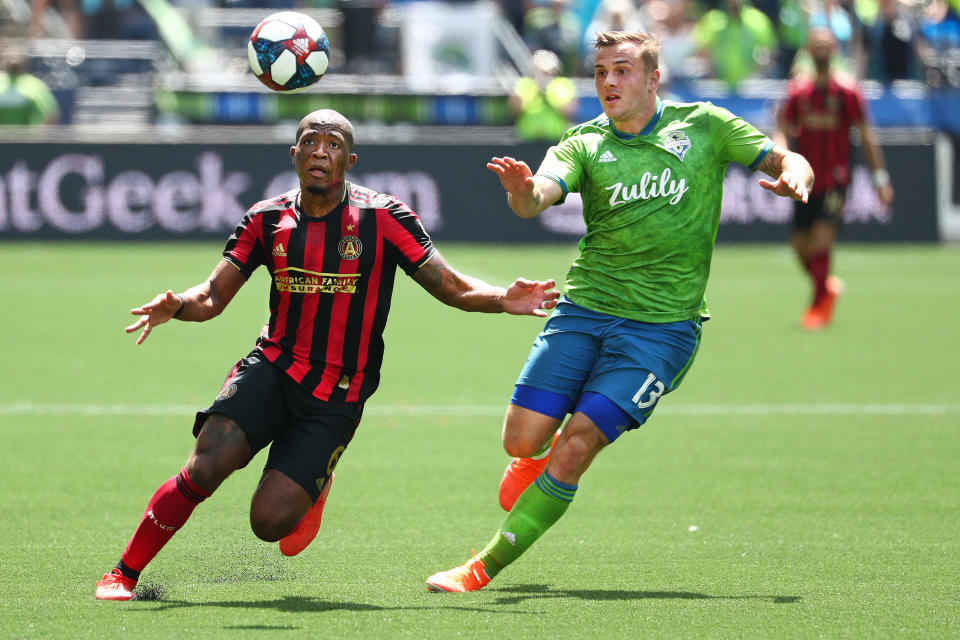How we'd fix soccer: MLS must spend bigger on players if it wants to take the next step
On just about every front, Major League Soccer is unrecognizable from the humble operation it was in its early days. Before the coronavirus pandemic stopped MLS’s 25th anniversary season cold just two weeks in, the league was celebrating the arrival of two more expansion teams, Inter Miami and Nashville SC.
What was a 10-team circuit as recently as 2004 ballooned to 26 clubs this year, with four more cities — including Charlotte, which paid an expansion fee north of $300 million last December — set to kick off before the middle of this decade. The majority of franchises play in custom-built soccer stadiums. Many are fanatically supported by diverse young urban professionals with disposable incomes, the very demographic traditional North American sports leagues like the NBA and NFL covet most.
The last two MLS champions, the Seattle Sounders and Atlanta United, draw more than 40,000 fans per game. All of this was inconceivable when MLS kicked off back in 1996. Heck, Atlanta and Seattle weren’t even in the league at all back then.
Yet if there is one area where MLS hasn’t made nearly as much progress as many hoped for a quarter-century ago, it’s on the field. Let’s be clear here: The teams that comprise the league today are deeper and more professionally run than they were at the turn of the millennium. They’re better. But are they significantly better?

As good as LAFC was in 2019, when Bob Bradley’s side set a new record for regular season points and Mexican national team standout Carlos Vela shattered the single-season goals mark, an argument can be made that the great D.C. United teams of the late 1990s were just as good.
To date, MLS’s lone CONCACAF championships were won by D.C. United (in 1998) and the LA Galaxy (2000). Mexican clubs have taken all but two of the regional titles since, with Costa Rica also producing back-to-back champions in the mid-2000s. Only three MLS reps (Real Salt Lake, Montreal Impact and Toronto FC) have even made it to a final.
Money is the reason why. MLS has grown by leaps and bounds off the field partly because it chose, wisely, to invest in bricks and mortar; today, some of its facilities rival the best on offer anywhere in the world. But despite their vast collective wealth, MLS owners — many of whom also own teams in higher-profile sports leagues — have been reluctant to pour the sort of cash into MLS’ rosters that would allow the league to truly compete toe-to-toe with Liga MX, to say nothing of Europe’s even more deep-pocketed elite.
Those owners have instead opted to continue along the path of slow, steady growth. And there’s something to be said for that. Patience is the reason MLS survived those uncertain early years, allowing it to stabilize in the mid-2000s and double in size in the 2010s.
Sooner or later, though, the product on the field must also get to the next level. Luring established, in-their-prime stars from Europe and South America would dramatically increase the value of MLS’s media deals, a virtuous cycle that would provide more revenue to reinvest in playing staff. But the guys who sign the paychecks will have to make the first move.
MLS has only just recently has embraced its position as a selling league. Atlanta bought Paraguayan international Miguel Almiron from Argentina’s Lanus for $8 million in 2016; two years and a league title later, the Five Stripes flipped him to Newcastle of the English Premier league for more than double that amount.
The U.S. will co-host the 2026 World Cup along with Canada and Mexico, giving MLS a unique opportunity to show off its sparkling soccer infrastructure. The buzz won’t last if it doesn’t result in an influx of all-world talent.
Some sort of enhanced partnership with Mexican soccer seems to be the next step. Whatever the plan, a lot more money will be required to bridge the on-field gap between MLS teams and their more esteemed foreign counterparts. The median salary in the Premier League is about $3 million, more than 10 times the MLS average, a figure skewed by the relatively small number of high-earning “designated” players like Vela allowed on MLS rosters. The minimum wage in MLS just over $60,000 this season.
That’s just not major league. MLS has come a long way, to be sure. But until it is willing to stock its teams with a critical mass of athletes with the ability that commands top dollar, its biggest successes will continue happen away from the field.
In other words, away from where it matters most.
More from Yahoo Sports:



